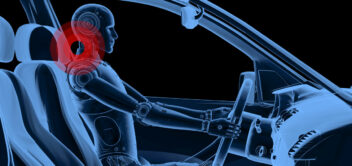Birth Injury Medical Negligence Claims | We Can Help You
Birth Injury Claims – Infant / Baby
Following on from 9 months of pregnancy, The birth of your baby should be one of the happiest moments of your life. In contrast, unfortunately things do not always go according to plan during labour. If something does go wrong in the delivery room, a birth injury may be sustained by both mother and baby. However, some birth injuries will not be immediately apparent and can sometimes manifest after months or even years following birth.
Common birth injuries caused by medical negligence:
- Brachial Plexus Injury – Erb’s Palsy
- Cerebral Palsy
- Klumpke’s Palsy
- Intracranial Haemorrhages
- Pulmonary Hypertension
- Shoulder Dystocia
- Birth Asphyxia
Statute of Limitations for Infant / Child Claims
Unlike Personal Injury law for adults (who have 2 years from the date of injury to issue a claim) a parent or guardian can commence the injury claim for the child 2 years from the date of their 18th birthday rather than in normal cases 2 years from ‘date of knowledge’. So if a potential claimant was a baby or infant at the time of injury, although we don’t recommend waiting this long, legal action can be taken up to their 20th birthday. With all personal injury claims we advise seeking legal advice as soon as possible. This law is in place for children as it’s not always possible to define the long term physical or psychological consequences of the injury the infant has suffered until they have reached maturity.
Start a Claim on Behalf of Your Infant
If you have any legal questions or wish to start your claim, please do not hesitate to contact our dedicated and experienced team of solicitors who will be more than happy to talk you through the whole process and answer any questions that you may have. Contact us 7 days a week by Phone: 01 453 7890 Email: info@lawline.ie or fill out our Call Back Form.
See Also – Accidents Involving Children – Claiming on their Behalf
-
Brachial Plexus Injury
The Brachial Plexus, first of all, is the network of nerves responsible for sending signals from the spinal cord to the shoulder, arm and hand. A a result, a Brachial Plexus injury can occur when these nerves are compressed and or stretched. In extreme cases they can be torn away from the spinal cord.
When this injury occurs at birth it is known as Brachial Plexus Birth Palsy or Erb’s Palsy. This injury causes arm weakness and loss of motion. 1/2 out of every 1000 babies will be diagnosed with this condition. The main cause of Erb’s Palsy is an infant’s neck being stretched to one side during delivery.
Erb’s Palsy will affect the upper limbs and more usually the shoulder. If it is a case that both upper and lower limbs have been affected then this is much more severe than Erb’s Palsy. This severe injury is called “Global” or “Total” Brachial Plexus birth injury. There are four types of nerve injuries that can occur during labour. It is worth noting that all four can occur in the same child at the same time.
These types of nerve injuries, in order of severity are:
- Neurapraxia
- Neuroma
- Rupture
- Avulsion
Brachial Plexus injuries in new born babies will generally occur due to a difficult labour i.e. delivery of a particularly large baby, the baby is breech or the labour take a particularly long time. It can also be caused where the doctor or midwife needs to deliver the baby quickly and uses force to remove the baby.
-
Klumpke’s Palsy
Klumpke’s Palsy is a form of Brachial Plexus injury. It affects the lower portion of the Brachial Plexus nerves, causing paralysis in the forearm and hand. This is a very rare condition. Klumpke’s Palsy is generally caused under the same conditions as Erb’s Palsy.
-
Intracranial Haemorrhages (Brain Bleeds)
Intracranial Haemorrhages (Brain Bleeds) are a type of traumatic birth injury; they can range from minor to severe and can be caused by medical negligence. The most common complications leading to a brain bleed are:
- Oxygen Deprivation
- Misuse of forceps
- Trauma during delivery
- Misuse of vacuum extractors
Different types of Brain Bleeds:
- Subarachnoid Haemorrhage, this tends to occur in full term babies and is the second most commonly detected brain bleed in babies. This particular bleed can lead to hydrocephalus, periventricular leukomalacia, Cerebral Palsy and permanent brain damage.
- Cerebral Haemorrhage, this is a type of stroke which causes a bleed within the babies brain itself;
- Intraventricular Haemorrhage, this is the most serious type of brain bleed and is usually seen in premature babies due to a low birth weight. It can also be caused by physical trauma during birth and hypoxia;
- Subdural Haemorrhage – Subdural Hematoma, this will occur where there is a rupture of one or more blood vessels in the subdural space. These ruptures are usually caused by difficult deliveries;
- Caphalohematoma, this bleed will usually occur within a few hours of birth and will manifest itself as a raised bump on the baby’s head.
-
Pulmonary Hypertension
This is a complication relating to the heart, lungs and blood pressure, when it occurs in new born babies it is referred to as Persistent Pulmonary Hypertension (PPHN). PPHN can be a very serious condition if it is not immediately diagnosed and treated, resulting in lifelong damage or even death. The most common cause of PPHN is low oxygen levels during birth, however, other possible causes include:
- Perinatal asphyxia
- Diseases or infections
- Complications with the umbilical cord
- Medication
- Low blood pressure
- Low oxygen levels in the mother
- Low blood sugar
What are the symptoms to look out for?
- Weakness or lack of crying
- Difficulty breathing
- Rapid breaths (tachycardia)
- Rapid heart rate
- Cyanosis (blue tinted skin)
Failure to diagnose and treat this condition in a new born baby can lead to heart problems, organ damage, brain damage, cerebral palsy and even death. Although it is next to impossible for a doctor to prevent this condition, they are under an obligation to carefully observe a new born baby in order to rule out the possibility of PPHN. If PPHN is a possibility doctors must act instantly in order to prevent permanent damage.
-
Shoulder Dystocia
Shoulder dystocia occurs when the baby is being delivered. After the baby’s head is delivered, the shoulder can become caught or trapped behind the mother’s pubic bone. Doctors must act quickly should this situation arise as failure to act can result in permanent brain damage or even death.
Shoulder dystocia is considered to be one of the most preventable birth injuries. Although this type of birth injury will occur in an emergency situation, it is considered to be foreseeable. The obstetrics teams must have a management plan in place, should this issue arise. With the proper care and quick action of your medical team, shoulder dystocia can be prevented. If your medical team fail to act in time it can lead to devastating consequences, shoulder dystocia can trap the baby’s head and pinch the umbilical cord, this will prevent oxygen from getting to the baby and also restrict blood flow. If shoulder dystocia does occur, the baby should be delivered in five minutes or less.
Types of shoulder dystocia injuries include:
- Brachial plexus nerve injuries (Erb’s Palsy & Klumpke’s Palsy);
- Hypoxic brain injury;
- Cerebral Palsy;
- Fracture of the clavicle;
- Infant death.
Shoulder dystocia is more likely to occur in certain situations, and in these particular situations your medical team should be on high alert:
- Baby is larger than 8.8 pounds;
- Mother suffers with diabetes;
- Previous birth complications;
- Maternal obesity;
- Gestation period has gone over 42 weeks.
-
Birth Asphyxia
One of the biggest dangers when giving birth is depriving the baby of oxygen. Birth asphyxia is a result of oxygen deprivation, just a few minutes can lead to permanent brain damage, and sadly this is one of the most common causes of birth injury. Lack of oxygen to the brain will usually lead to hypoxic ischemic encephalopathy (HIE). HIE can result in hypoxic-ischemic brain damage, seizures, developmental delays, intellectual disabilities or cerebral palsy.
Main causes of birth asphyxia:
- Placental abruption
- Ruptured uterus
- Anaesthesia malpractice
- Prolonged labour
- Foetal stroke
- Pre-eclampsia – eclampsia
- Intracranial haemorrhage (brain bleed)
- Inadequate foetal monitoring
- Prolapsed cord
- High blood pressure
- Cord being wrapped around the baby’s neck






































